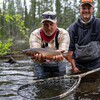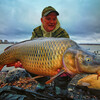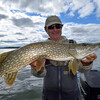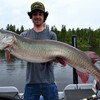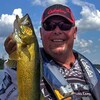
Largemouth Bass At West Bay Cottages
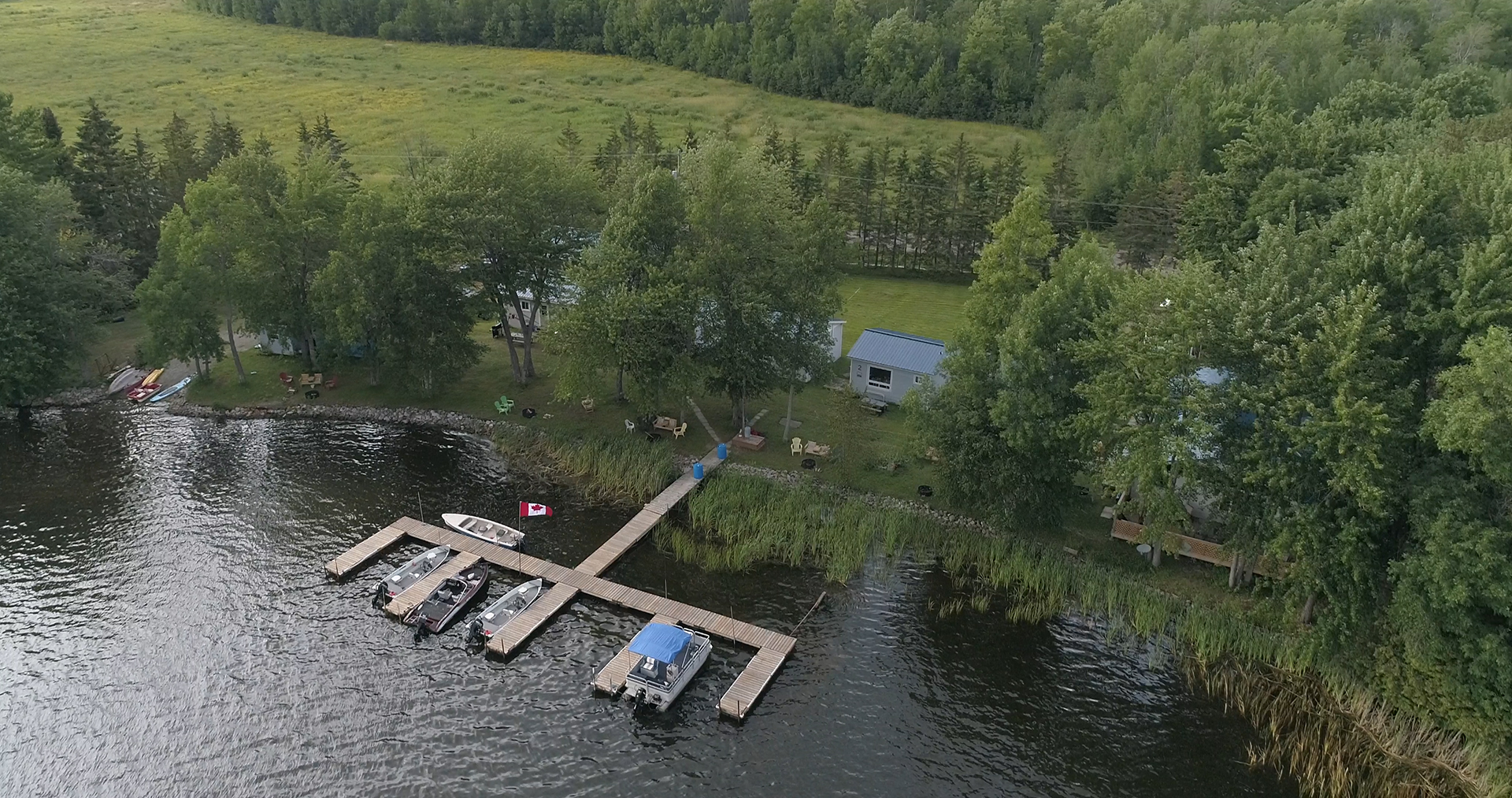
Editor's Note: This article was originally published in 2019.
It was mid-August, and the Fish TV crew headed north to beautiful Lake Nipissing to shoot a show.
Before we get into the fishing, let’s talk about the accommodations at West Bay Cottages. They are located on the west bay of Lake Nipissing in Northeastern Ontario with six small, quaint cottages.
This family-owned resort makes you feel right at home. Jim and Mimi are fantastic hosts and will help you with anything you need to make your stay comfortable, with brand new boats and motors to rent, a great dock, and some fun water toys to enjoy. The cottages come with a BBQ and fire pit for cooking, also a TV with satellite on rainy days, you can’t get out on the water. This place is sure to make you want to come back!
Now, let’s talk about fishing! West Bay has so much to offer when it comes to fishing different species—from smallmouth to pike to trophy muskie, and the walleye fishing is unbelievable, with fish catching up to 60 fish a day!
But for our adventure, we were after the largemouth bass. West Bay isn’t really known for its largemouth bass, but some locations are just filled with them, and they are literally untouched, as a lot of people focus on the walleye. The key is to look for creeks and back bays that have a ton of weeds and lily pads, and that’s what we focused on when looking at the map, even before we got started.

When it comes to Lake Nipissing and the West Bay area, you had better have a good Garmin GPS unit, with rocks just under the surface and all over the place. A Garmin GPS unit will map out the safest route to get you to these back creeks and bays so you can enjoy every minute of these jumping Largemouth Bass. When we finally reached our destination and got to our first creek, I was getting a little worried.
The vegetation wasn’t up, with very little weed and hardly any lily pads; we fished the area for about two hours and never got a bite. But this was only the first creek, and if you look at the map, there are several creeks in West Bay that you can access. So, with not a bite, we decided to check the next one, and as we were getting close, I could already see the difference with lily pads up on the outside of the creek and weeds all over the mouth of the creek that had been up for a while. Right then, I knew we were going to get some fish; there was no doubt about it.
The first cast Leo took, he hooked into about a 2-pound largemouth, and we hadn’t even gotten near the mouth of the creek. Now let me explain: when I say creek… this isn’t a creek that is running shallow water down some rapids, this is a creek that is at least 6 to 7 feet deep in the middle, and will have lily pads and weeds on each side right to the banks. The perfect creek will have deep water in the centre; the deeper the creek, the better the fishing will be.
So back to the fishing! As we worked our way into the creek, we spotted bait fish, blue gill, perch, and others. This is a fantastic sign—when you see this, you know there will be fish in the creek. Between Leo, I and Jeff, we must have had 20 rods out on the deck of the Lund, not knowing whether the fish were going to be on the edge of the deep water or right back under the pads and weeds in the shallow water on the bank, so it was a process of elimination. We worked the deeper weeds on our way in and caught a few small fish, but we just weren’t on the bigger ones.
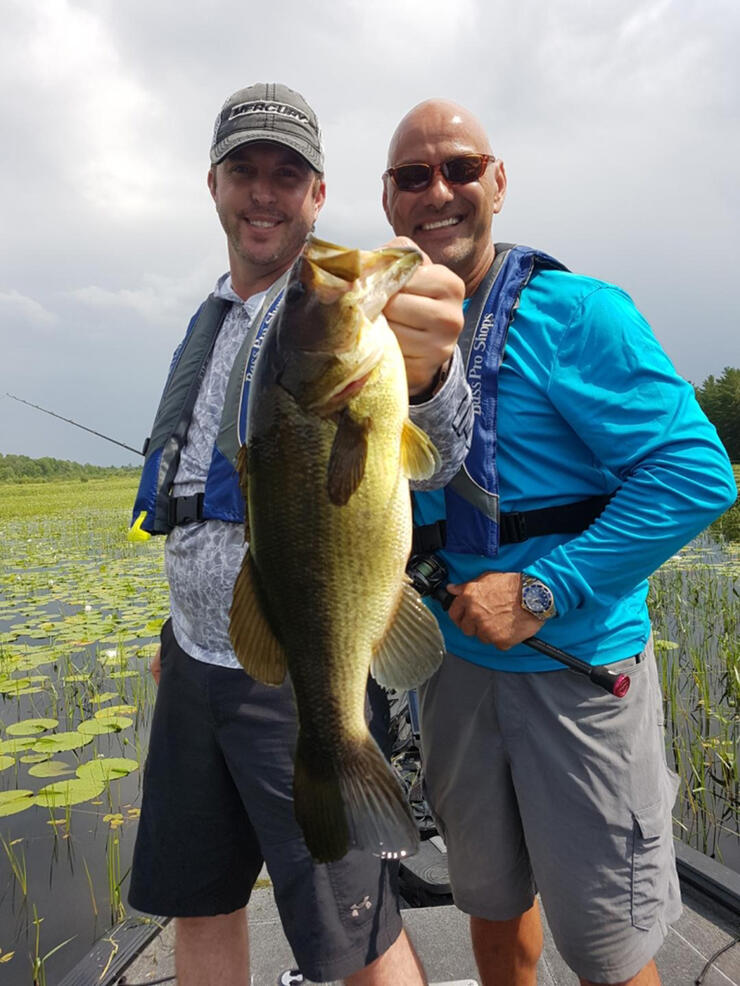
The thing is, when you are catching fish steadily like that, it is hard to make a move because you are having fun. But we knew that there were big fish in Lake Nipissing, so we decided to head off the main creek channel and head into the thick cover and towards the bank.
Well, are we ever glad we did! The fish started moving all over the place, and they were in 2 feet of water or less. The problem was that they were very spooky. When it comes to big fish in shallow water, they can feel everything under the water, from the sound of your trolling motor to dropping something on the bottom of your boat. So we started moving our way back in very shallow water, but what we would do is use the MotorGuide trolling motor and push our way through the weeds and then drop our PowerPoles.
For those of you who don’t know what a PowerPole is, it is a shallow water hydraulic anchor that will hold you in place up to 8 feet by just pushing a button. Then once the PowerPoles were down, we would just sit there for about five minutes or so until the fish settled down, and then we started casting in any direction. With all the rods that we had on the deck, we would end up with one rod each in our hand: an 8-foot heavy action rod with an R-type reel with 65-pound suffix 832 braided line. With the 8-foot rod, we could make really long casts (and that was key) with the 65-pound test braid, we could get the fish out of the heavy cover, so equipment is a must when you are fishing shallow-water largemouth bass.
Once we were quiet and fished the area that we anchored in, we would take our MotorGuide trolling motor a little further and drop the poles again and make long casts. After six hours of topwater fishing between Leo, me, and Jeff, we caught over 30 largemouth bass from 2 to 4 pounds, and we never saw another boat all day.
So the next time you head up to West Bay Cottages, make sure you pack a Garmin GPS, some Rapala heavy action rods and some Terminator frogs, and you will have a blast just like we did!
Recommended Articles

10 Facts About Lake of the Woods

3 Great Ontario Walleye Destinations

The Tigers of Sunset Country

Eating Northern Pike

Predicting Lake Thickness
Ontario Brook Trout

Learn to Be Slow in a Hurry

Casting for Coasters
Top 8 Places to Ice Fish in Ontario

Beaded Lures

Fly Fishing The Nipigon River: What To Bring
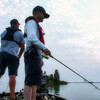
Batchawana Bay Smallmouth Bass
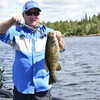
Bob Izumi searches for bass and pike
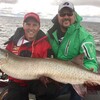
Bear Creek Bruisers

Top 5 Baits for Smallmouth and Largemouth Bass

A Whole Lota Lovin'
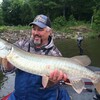
Goulais River Muskie
Top 5 Musky Destinations in Ontario




